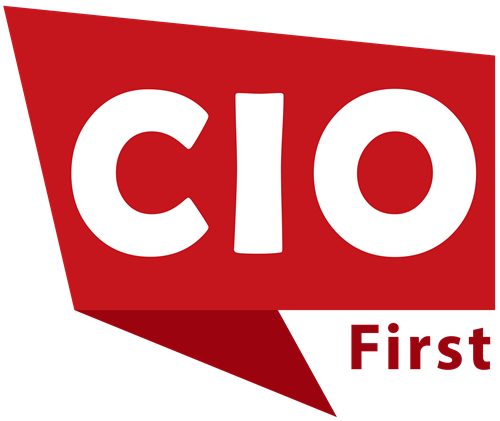Despite their similar sounds, ‘no-code’ and ‘low-code’ have significant distinctions and might each offer a special advantage to your company. Platforms with little or no coding are the way of the future. Up to 90% less time is spent creating custom apps using these revolutionary technologies than with traditional application development, which depends on coding languages. After using them for five years, businesses that invested in them likewise had a 509% return on investment.
First, some history before we go into more detail.
In recent years, the world’s business practices have rapidly changed due to process automation. AI-powered, user-friendly automation software has allowed employees in companies worldwide, in a variety of industries, and in all kinds of organizations to recover time and resources that were previously used for tedious manual operations.
They are citizen developers, not software developers. Their use of low-code and no-code software has reduced the entry barrier into the field of application development. These technologies are intended to enable employees who lack formal software development training, that is, who have no prior understanding of coding languages, to create apps and automate processes on their own.
What is Low Code Automation?

One kind of process automation software that almost requires no software development experience to utilize is called low-code automation. While some coding expertise is necessary, it is far less than that of professional developers, who possess in-depth knowledge of coding languages and other complex ideas. Because of its user-friendly architecture, visual modules, and focus on fundamental logic, low-code automation facilitates faster application development.
Advantages of Low Code Automation
● Customizability
Unlike no-code automation solutions, low-code automation technologies allow users to customize programs. The ideal user can take more control of various features and modify them to suit their needs because they approach low-code software with some basic knowledge of coding. (For instance, users can add API integrations for their organization’s current systems using certain low-code automation software. Naturally, having knowledge of APIs is beneficial.)
● Maintenance
Low-code automation software makes it easier to manage applications and workflows than completely custom-coded ones. The tools that businesses utilize must evolve and adapt with them as they do. Low-code automation systems are frequently made to grow alongside the companies that utilize them, enabling quick, continuous modifications. Additionally, fewer requests sit in the backlogs of software developers since citizen developers are able to make those changes.
Disadvantages of Low Code Automation
● Programming knowledge
Working with low-code automation solutions doesn’t require you to be a skilled software engineer. Onboarding employees to become citizen engineers, however, is greatly aided by having a rudimentary understanding of coding (such as basic logic, APIs, and command line interfaces). Although you don’t have to be an expert in any programming languages, you should still anticipate seeing a few lines of code here and there because low-code doesn’t necessarily equal no-code.
● Developer dependency
Non-IT professionals who can create apps on their own using low-code automation tools are known as citizen developers. Build is the key term. Because they will still require assistance from their organization’s expert developers to complete that project and make sure their creation is error-free and suitable for usage. The professionals’ workload is typically reduced by citizen development teams, although some knowledgeable supervision will always be required.
What is No Code Automation?
No-code automation tools, in contrast to low-code automation, necessitate no prior understanding of coding or software development. With these, almost anyone can begin developing apps immediately. The capabilities of these tools are visually intuitive, just like their low-code cousins; many systems provide drag-and-drop functionality to make programming as easy as feasible. In order to expedite the procedure, they also come with a number of pre-made tools and templates.
Advantages of No Code Automation

● Speed
The tremendous growth of global citizen coders can be attributed in part to the availability of user-friendly automation technologies. A significant amount of the credit here goes to no-code automation tools whose code-free environment, pre-built capabilities, and easy-to-use user interfaces all speed up application development timeframes. As soon as the requirement emerges, anyone can create a workflow solution because this software is accessible to anyone.
● Reduced Costs
Consider educating each employee in the company to become a qualified software developer. It would be really expensive! Thanks to no-code automation solutions, it is not only impractical but also unnecessary. The cost of buying or subscribing to the software is the only expense incurred by the company. (Not to mention the time savings when citizen developers take over the easier chores, freeing up the time of professional developers.)
Disadvantages of No Code Automation
● Customizability
Customizability was one of the benefits of low-code automation. The explanation is that having a bit more knowledge gives you a lot more flexibility. However, employees must rely largely on pre-made templates and widgets because there is no code automation and little skills are needed. Your citizen developers will have limited or no choices for customizing any applications they create since adjusting certain features requires a better understanding of how they operate.
● Reliance
The efforts of the manufacturers who developed no-code development platforms are partly responsible for their ease of use. A group of qualified developers updates and maintains these programs on the backend to make sure they are effective and available to citizen developers. Regretfully, this also forces companies to stick with their preferred vendors; when companies expand and develop, they will probably have to give up their outdated apps if they choose to move to a different platform.
Also Read: How DevOps Automation is Reducing Complexity for Scalable Growth
Low Code vs No Code Automation: At a Glance
Did you know that by FY 2023, the federal government of the United States invested around US$ 236 million a year in LC/NC technologies? Of that, 58% came from small enterprises, demonstrating both market potential and economic effect. To gain a better idea, let’s examine their respective features.
| Feature | Low-code Automation | No-code Automation |
| Coding Required | Minimal coding required | None |
| Target Users | Developers, IT teams, and technically inclined users | Business users, non-technical staff |
| Ease of Use | Moderate. It uses visual tools but may require some coding | Very easy. It uses drag-and-drop interfaces and visual builders |
| Speed to Deploy | Fast. It is quicker than traditional coding, but may involve IT collaboration | Fastest. It can be implemented and updated independently by business teams |
| Workflow Ownership | Shared ownership between business and IT | Owned and maintained by business users |
| Use Case Fit | Complex workflows needing advanced logic, deep integrations, or legacy system access | Structured, repeatable processes (e.g., onboarding, approvals, communications) |
| Scalability | Highly scalable for flexible, complex workflows | Highly scalable for standardized, enterprise-grade workflows |
| IT Dependency | Occasional—especially for advanced features or integrations | Minimal to none |
Is Low Code or No Code Automation Better?
A trick question. For any organization, neither low-code nor no-code software is a ‘better’ choice overall. No two firms will profit equally from a process automation platform, just as no two businesses function quite alike.
Asking how each may support digital transformation in many areas of a company is significantly more helpful than comparing low-code and no-code software. You must first have a thorough awareness of the objectives of that organization in order to do that. Some worthwhile questions might be.
- How is our IT department doing right now? Would a reduced workload be advantageous for our skilled software developers? Could citizen developers take on any jobs to free up their time and make better use of their resources and skills?
- What proportion of our employees have knowledge of software development? Do some of them have some prior experience or training, or are the majority new to the world of coding? Can we help employees transition to a new automation software by offering a citizen development initiative?
- Which features of no-code and low-code software would most affect our capabilities? Is it worthwhile to spend money on workplace training to guarantee that we will have more customization options in the future? Or is simplicity and speed, even at the expense of some flexibility, the key to success?
There are still many options that provide the best of both low-code and no-code platforms, despite the fact that they frequently exist independently of one another. The ideal process automation solution may provide a mix of features that provide simplicity and flexibility, depending on the objectives, goals, desires, and capabilities of your company.
Bottom Line
The enterprise’s objectives, available resources, and technical proficiency will determine whether low-code or no-code automation is appropriate. Both approaches have a lot of potential. Because it is quick, easy, and economical, no-code is perfect for empowering business users and expediting daily tasks. On the other side, low-code offers scalability, flexibility, and customization for more intricate procedures that call for greater integration. Instead, businesses should consider them as complementing tools rather than rival strategies. Whether a hybrid approach or the best option is chosen will rely on how well each fits the organization’s long-term growth goals, IT capabilities, and digital transformation plan.
























